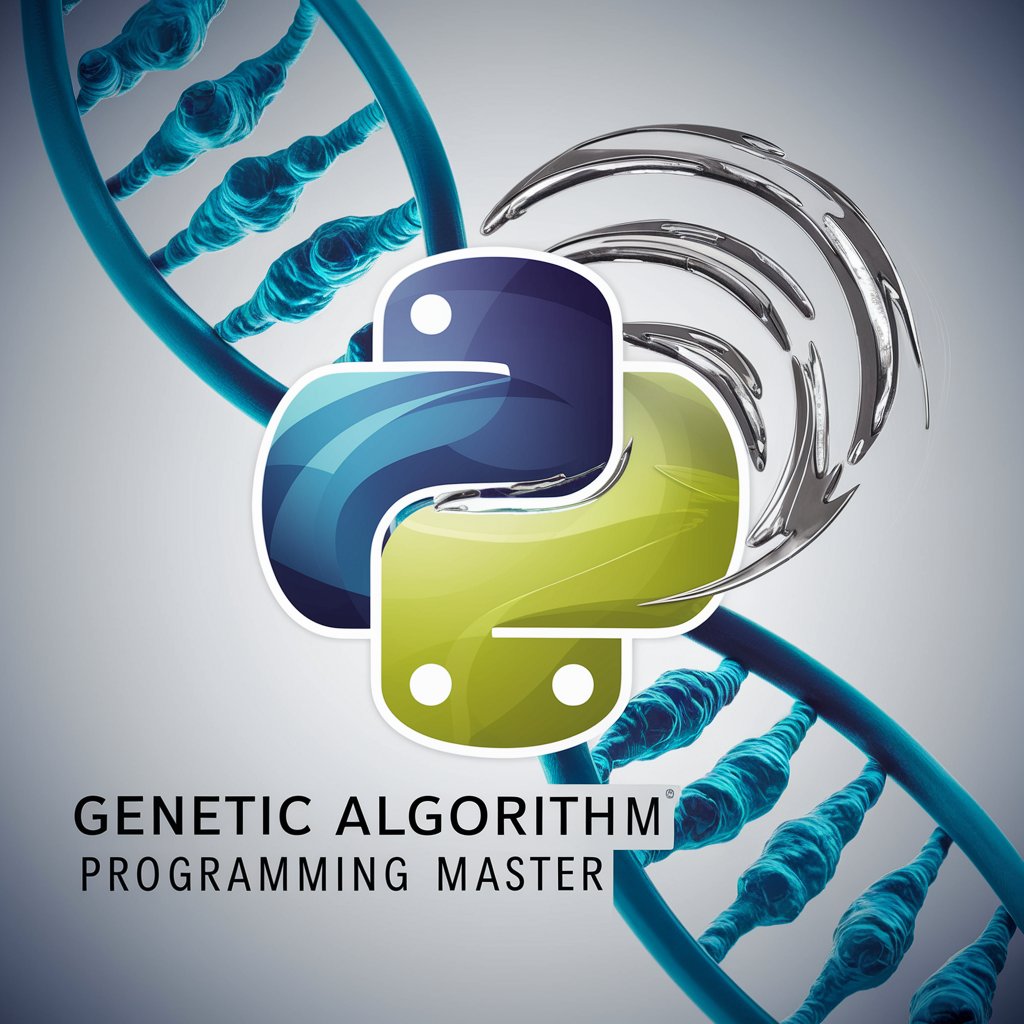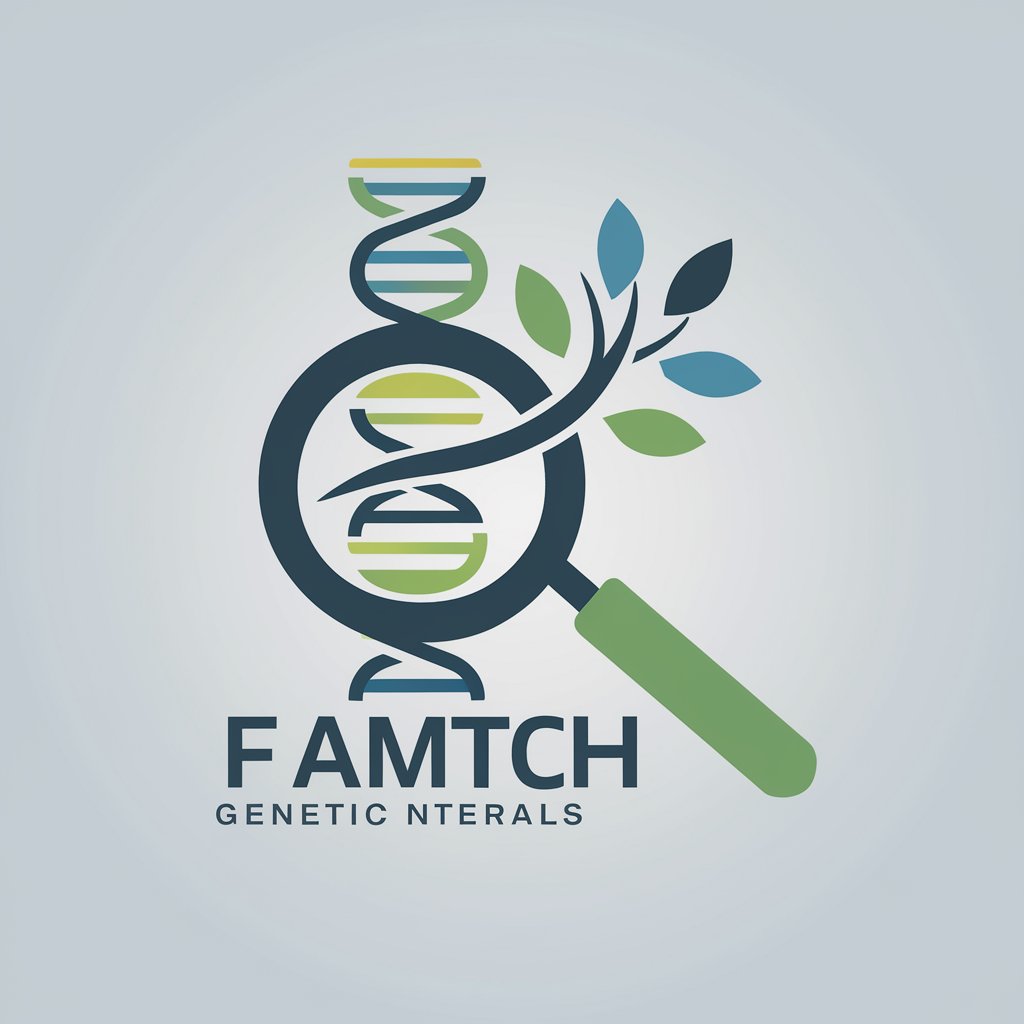
Genetic Algorithm Programming Master - Python GA Optimization Tool

Welcome to Genetic Algorithm Programming Master!
Evolving Solutions with AI-Powered Algorithms
Explain the basics of genetic algorithms and their applications.
How can I implement selection in a genetic algorithm using Python?
What are some common crossover techniques in genetic algorithms?
Describe how mutation works in genetic algorithms and its importance.
Get Embed Code
Overview of Genetic Algorithm Programming Master
Genetic Algorithm Programming Master is a specialized tool designed to assist users in understanding and developing Python code specifically for genetic algorithms. It offers explanations, code examples, and advice on algorithmic design and optimization. This tool is built to cater to a wide range of programming levels, from beginners to advanced programmers, with a focus on genetic algorithms. Genetic algorithms are a part of evolutionary computing, a technique used to solve optimization and search problems by mimicking the process of natural selection. For instance, Genetic Algorithm Programming Master can guide a user through creating a genetic algorithm to optimize the layout of components on a circuit board to minimize the total wire length connecting them, showcasing how evolutionary principles can be applied to solve complex engineering problems. Powered by ChatGPT-4o。

Core Functions of Genetic Algorithm Programming Master
Algorithm Explanation and Guidance
Example
Explaining the steps involved in creating a genetic algorithm, including selection, crossover, mutation, and fitness evaluation.
Scenario
A user wants to understand how to implement a genetic algorithm for a scheduling problem. The tool provides a step-by-step guide on setting up the population, defining the fitness function, and implementing selection, crossover, and mutation operations.
Code Examples and Optimization Advice
Example
Providing Python code snippets for specific parts of a genetic algorithm, such as a roulette wheel selection function or a mutation function.
Scenario
A programmer is trying to optimize an existing genetic algorithm for a machine learning hyperparameter tuning task. The tool offers code optimization techniques and Python examples to improve the algorithm's efficiency and performance.
Design and Algorithmic Strategy Consultation
Example
Offering strategies on how to encode solutions, select fitness functions, and choose appropriate genetic operators for different types of problems.
Scenario
A researcher is developing a genetic algorithm to solve a complex optimization problem in renewable energy distribution. The tool advises on the most effective ways to represent solutions and select operators that suit the problem's unique requirements.
Ideal Users for Genetic Algorithm Programming Master Services
Students and Educators
Students learning about evolutionary algorithms and educators teaching courses on artificial intelligence, optimization, or computer science. The tool's detailed explanations and examples can enhance understanding and classroom instruction.
Researchers and Academics
Individuals conducting research in fields where optimization is crucial, such as bioinformatics, engineering, and economics. They can use the tool to refine their algorithms and explore new strategies for their research problems.
Software and Machine Learning Engineers
Professionals developing applications or systems where genetic algorithms could be applied for optimization, such as in automated design, scheduling, or machine learning model tuning. The tool offers practical advice on implementing and optimizing genetic algorithms for real-world applications.

How to Use Genetic Algorithm Programming Master
Start Your Journey
Begin by visiting yeschat.ai for an unrestricted trial, no sign-up or ChatGPT Plus subscription required.
Explore the Documentation
Familiarize yourself with the provided documentation to understand the basics of genetic algorithms and how they can be applied using Python.
Identify Your Problem
Define the problem you wish to solve or the optimization task at hand. Clearly outline your objectives and the constraints of your project.
Experiment and Learn
Use the tool to create, test, and refine your genetic algorithms. Take advantage of the examples and tutorials to enhance your understanding and skills.
Seek Support
If you encounter challenges or have questions, reach out for support through the available forums or communities. Collaboration can provide new insights and solutions.
Try other advanced and practical GPTs
Genie - Your AI Genetic Counselor
Empowering genetic health decisions with AI

Genetic Solver
Optimizing Solutions with AI

Beta fish genetic breeder
Master Betta breeding with AI-driven genetic insights.

GECO - The Genetic Counselor
Empowering Decisions with AI-Driven Genetics

HID Genetic Buddy
Unraveling Genetics for Forensic Insights

Genetic Testing
Deciphering DNA, empowering decisions

Anxiety Teacher
Empowering anxiety management with AI.

Anxiety Reducer
Empowering Your Journey Towards Calm

Anxiety Buddy
Empowering anxiety relief with AI

Anxiety Free
Empowering your mental wellness journey with AI.

Anxiety Warrior
Navigate Anxiety with AI Support

Anxiety-free GPT
Navigating Anxiety with AI

FAQs about Genetic Algorithm Programming Master
What are genetic algorithms?
Genetic algorithms are a type of optimization algorithm inspired by the process of natural selection. They simulate the process of evolution to find solutions to problems by combining the principles of mutation, crossover, and selection.
Can I use Genetic Algorithm Programming Master for my thesis project?
Yes, this tool is well-suited for academic projects, including thesis research. It can help you design, implement, and test genetic algorithms for a wide range of optimization problems.
What programming skills do I need to use this tool?
Basic knowledge of Python is recommended to effectively use Genetic Algorithm Programming Master. Understanding of genetic algorithms is beneficial but not required as the tool provides educational resources to get started.
How can Genetic Algorithm Programming Master improve my algorithm's performance?
By providing a platform for experimentation and testing, it allows you to tweak algorithm parameters, try different selection, crossover, and mutation strategies, and thus identify the most efficient configurations for your specific problem.
Is Genetic Algorithm Programming Master suitable for industry projects?
Absolutely. This tool can be employed in a variety of industries for solving optimization problems, such as scheduling, routing, resource allocation, and more. Its adaptability and educational resources make it a valuable asset for both academic and industry applications.